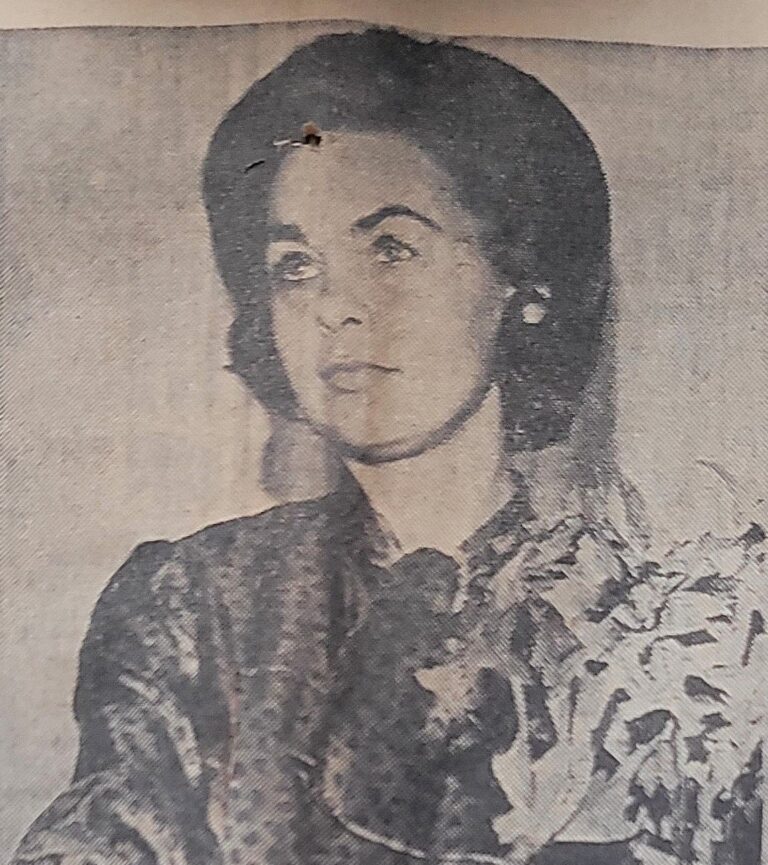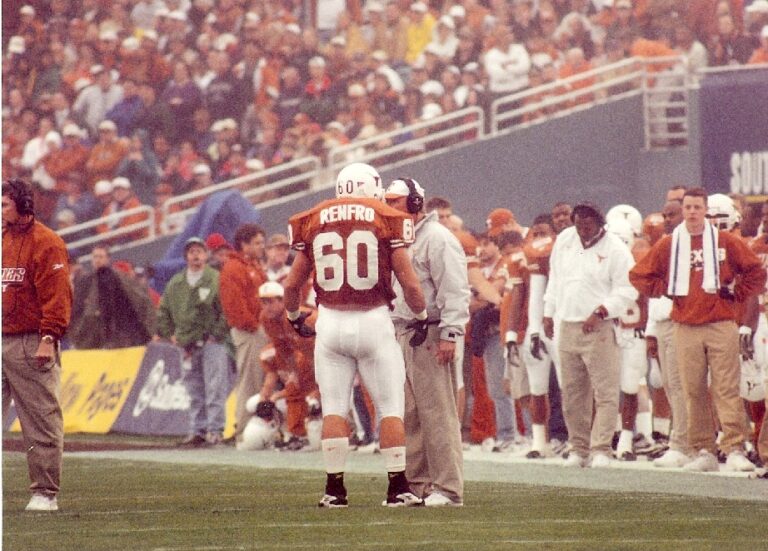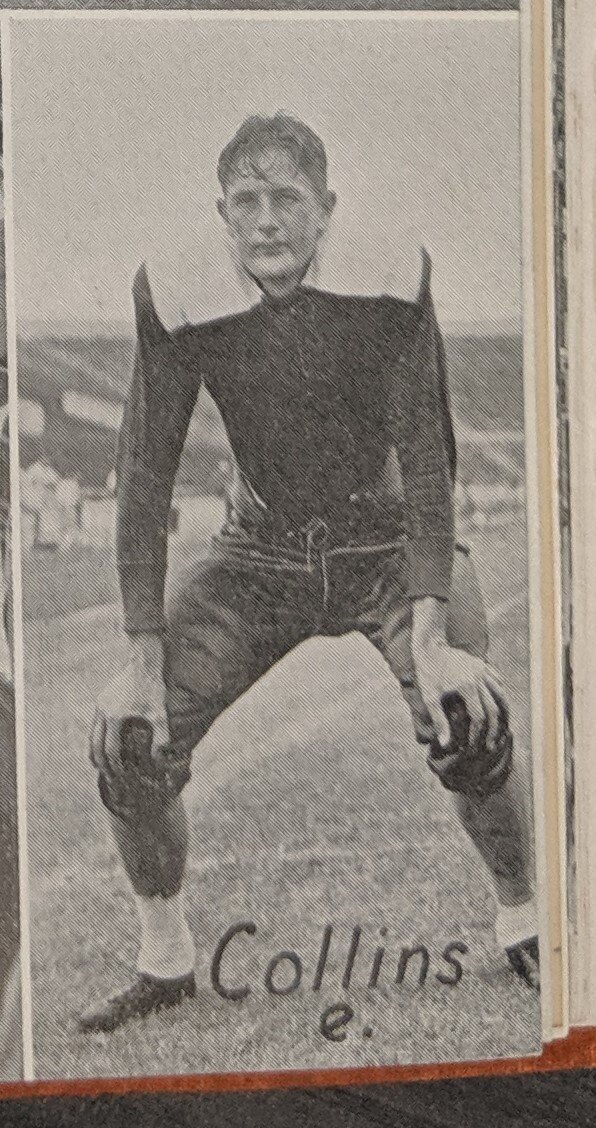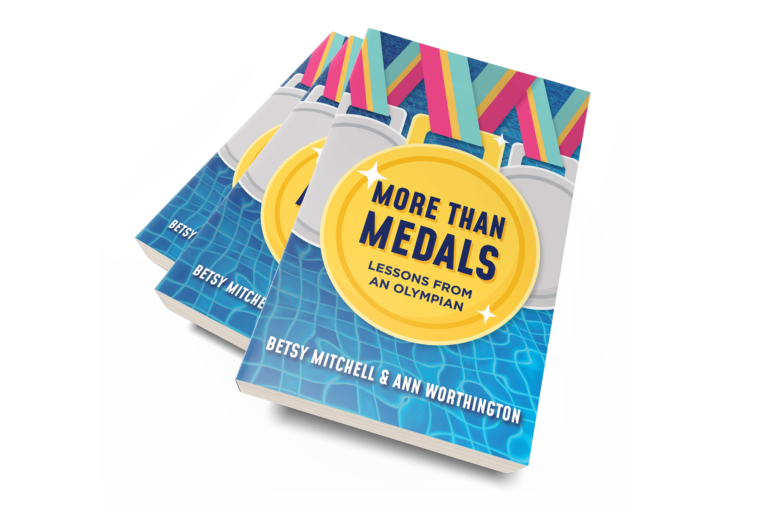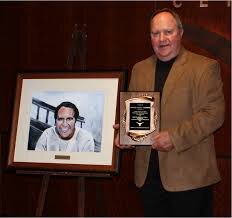Bobby Mitchell and Freddie Steinmark
Just Before 7 A.M.
Freddie Steinmark slipped out of his room wearing blue jeans and a T-shirt. Randy Stout says, “Where are you going?” Freddie says, ” My leg really hurts, so I will see the doctor for X-rays. ” Doctor Joe Reneau was the team physician, and Doctor Julian was the specialist who interpreted the X-rays. Doctor Julian told Freddie, “Because of the spot on the film just above his left knee, he was being sent to MD Anderson Hospital Tumor Institute in Houston.”
Trainer Spanky Stephens says, “Actually, as I took Freddie to Dr.Reneau’s office that morning, Dr Reneau did the interpretation of the x-ray. I did call Dr. Julian. They were on one line, and I was on the other Talking to Coach Royal About the diagnosis and the need to get Freddie into MD Anderson ASAP. Once that was done, I took Freddie back to the dorm and helped him pack a bag, and took him to Austin Aros. Put him on a university plane that took him to Houston.
Freddie was a teammate of mine, so it is my goal to capture Freddie’s life in as many TLSN website formats as possible. The picture was taken after Freddie lost his leg. In the photo, Freddie is in great spirits, surrounded by extraordinary friends who are also his teammates. Each teammate did what they could until he passed away to support Freddie during his darkest moments. God Bless my teammates, and thank you, Lord, for bringing the spirit of Freddie into our lives. He still resides in all of us.
For those who may have wondered, the strip on Scott Henderson’s upper lips is a bandage from splitting his upper lip at practice. Since Wuensch is holding the banner, he gives us the pinky horn.
For those interested, here are all the TLSN links about Freddiel.
https://www.texaslsn.org/author-bower-youssee…
https://www.texaslsn.org/freddie-steinmark-lost…
https://www.texaslsn.org/jimdent-couragebeyond…
https://www.texaslsn.org/bill-littles-article…
https://www.texaslsn.org/billy-schotts-remember…
The Big Shootout: Steinmark and Mitchell
September 23, 2016
Any discussion of “The Game of the Century” is incomplete without mention of The Wheat Ridge boys- Longhorns Freddie Steinmark and Bobby Mitchell, whose lives were forever changed in 1969 for reasons well beyond football.
The Big Shootout: Steinmark and Mitchell
November 19, 2014
In the absence of a foolproof recipe for building a championship team, we rely on the genius of coaches to know which ingredients will come together to reach destiny.
For Darrell Royal, two of the most important components of his 1969 title team came from one of the least-likely places: tiny Wheat Ridge, Colorado.
Freddie Steinmark and Bobby Mitchell were the talk of the Greater Denver area once they teamed up in the Wheat Ridge backfield after Mitchell’s family moved in from California. Their running styles complemented each other perfectly, turning the boys into stars whose local popularity was once compared to The Beatles by author Jim Dent, who wrote a book about Steinmark that is being developed into a movie.
Their arrival at the University of Texas in 1967 found the Longhorns in a quagmire of piling up four losses or more in three consecutive seasons. Royal moved the high school backfield mates to opposite sides of the ball- Steinmark to safety, Mitchell to the offensive line- where both would become major contributors.
After a sophomore year in 1968 that saw Steinmark become one of the resurgent Longhorns’ defensive stars by intercepting five passes, the Wheat Ridge boys had high aspirations for 1969- a year that would mark great triumph and great tragedy for both.
In January, Bobby received word that his older brother, Mark, an Army helicopter pilot, had been killed in action in Vietnam. Though the loss stung mightily both then and today for Mitchell, he was comforted by Steinmark and channeled his energy into winning a starting job at offensive guard that spring.
As the 1969 season began, Steinmark began to feel an increasing amount of pain in his left leg. Though noticeably hobbled, he continued to play through the pain as the Longhorns claimed victory after victory in their march toward a championship. The pain, nearing the end of the football season, caused Freddie to wake up in the middle of the night. The Trainer, Frank Medina, showed Freddie how to put analgesic balm between two pieces of gauze and tape it to his leg, and also advised hit to put a pillow under his knee at night. Steinmark also took Darvon; a painkiller supplied to him by team physician Joe Reneau. He was to the point that the pain caused him to skip classes and spend more time in his bed.
With the approach of the showdown with Arkansas, both players had reason to be nervous beyond the usual big-game jitters. With President Nixon attending the game, Vietnam War protesters made sure their voice would be heard among the hoopla of the game- providing a chilling reminder to Mitchell of his recent loss. He would also be playing in front of his girlfriend, Honor Franklin, an Arkansas student. Steinmark, on the other hand, just wanted to be able to endure the pain in his leg for one more game.
While Texas’ 15-14 victory was the beginning of the legendary status of many of the people involved with the game, it would mark the final football game in the life of Freddie Steinmark. Late in the game, he finally succumbed to the pain he’d played through all year and came out of the contest. Six days later, it was discovered he had bone cancer. His left leg was amputated, and he stood on the sideline using crutches when the Longhorns defeated Notre Dame in the Cotton Bowl on New Year’s Day, 1970. Just over a year later, in June of 1971, Steinmark passed away at the age of 22.
Mitchell, who would earn all-SWC honors for the Longhorns in 1970, went on to marry his Razorback girlfriend and become a successful dentist in Dallas.
“Jim Dent is a world-class storyteller, and in Freddie Steinmark’s courageous and triumphant fight to be a man of substance, he’s found a tale worthy of his ample talents. Dent will bring tears to your eyes, and steinmark’s example will make you want to be a better person.’”
Jim Dent, the award-winning, New York Times bestselling author of The Junction Boys, returns with a powerful Texas story which transcends college football, displaying the courage and determination of one of the game’s most valiant players.
#block-yui_3_17_2_1_1720186590494_7098 .sqs-gallery-block-grid .sqs-gallery-design-grid { margin-right: -2px; }
#block-yui_3_17_2_1_1720186590494_7098 .sqs-gallery-block-grid .sqs-gallery-design-grid-slide .margin-wrapper { margin-right: 2px; margin-bottom: 2px; }
Freddie Steinmark was a small but scrappy young man when he arrived at the University of Texas in 1967. A tenacious competitor, Freddie became UT’s star safety by the start of the 1969 season, but he’d also developed a crippling pain in his thigh. Freddie continued to play, helping the Longhorns to rip through opponents like pulpwood. His final game was for the 1969 national championship, when the Longhorns rallied to beat Arkansas in a legendary game that has become known as “the Game of the Century.”
Tragically, bone cancer took Freddie off the field when nothing else could. But nothing could extinguish his irrepressible spirit or keep him away from the game. Today, a photo of Freddie hangs in the tunnel at Darrell K. Royal-Texas Memorial Stadium, where players touch it before games en route to the field. With this moving story, a Brian’s Song for college football, Jim Dent once again brings readers to cheers and tears with a truly American tale of bravery in the face of the worst odds.
Praise for Courage Beyond the Game
Named one of Kirkus Reviews‘ Best Nonfiction titles of 2011
“Jim Dent, dadgum him, keeps writing books I wish I’d written. Now here he comes with another terrific effort, Courage Beyond the Game, the story of the most courageous kid to ever pull on a football suit. If you pick it up, it’s guaranteed to pick you up.” —Dan Jenkins
“Jim Dent is a world class story teller… [he] will bring tears to your eyes, and Steinmark’s example will make you want to be a better person.” —Joe Drape, New York Times bestselling author of Our Boys
“A superb work that paints the resilient athlete as a fierce competitor and an unforgettable sportsman.” –Kirkus, starred review




